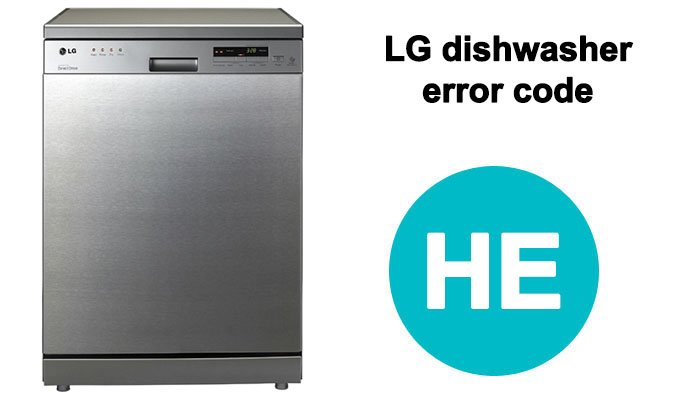
It is an experience familiar to many – the blinking lights or codes flashing on a dishwasher, indicating a problem that must be addressed. One such issue faced by LG dishwasher owners is the notorious HE error. Let’s delve into what this error code signifies, the possible root causes, and the comprehensive steps you can take to fix it.
LG, a prominent manufacturer of home appliances, has garnered a significant share of the global market with its high-quality products, one of which is the dishwasher. Designed to automate and simplify dish cleaning, these appliances are complex systems involving several components and intricate software to manage their operation. Occasionally, these systems encounter issues, such as the HE error code.
The HE error code typically indicates a heating problem within your dishwasher. The “HE” stands for “Heating Error,” and it usually pops up when your dishwasher detects a problem with its heating element or the temperature sensor.
The heating element in an LG dishwasher is responsible for heating the water to a suitable temperature, which is vital for effective cleaning. Meanwhile, the temperature sensor monitors the water’s temperature during the wash cycle, ensuring it’s within an acceptable range. If either of these components fails to function correctly, the dishwasher’s system will trigger an HE error.
Now, it’s worth noting that several issues can lead to this error. The most common causes include a malfunctioning heating element, a faulty temperature sensor, or problems with the control board that regulates these parts. Corrosion, wear and tear, or a sudden power surge can also lead to these issues.
Once the error is displayed, it is not recommended to continue using the dishwasher. The inefficiency of the heating element can lead to unclean dishes, and in more severe cases, it can even pose a fire hazard.
So, what should you do when faced with an HE error? Let’s break down the steps for diagnosing and fixing this problem.
- Inspect the Heating Element: Begin by turning off and unplugging the dishwasher to ensure safety. The heating element is usually located at the bottom of the dishwasher. Inspect it visually for any signs of damage or corrosion. Use a multimeter to test the heating element’s continuity. If there’s no continuity, the heating element is defective and should be replaced.
- Check the Temperature Sensor: The temperature sensor, typically attached to the heating element, should also be examined. If it appears damaged, or a multimeter test reveals it has no continuity, it needs replacement.
- Evaluate the Control Board: If both the heating element and temperature sensor are functioning correctly, the problem could lie with the control board. This component is responsible for sending voltage to the heating element and sensor. If it’s not providing the necessary voltage, it will need to be replaced.
- Professional Assistance: If you’re not confident about checking these components yourself, or if replacing them doesn’t resolve the issue, it’s advisable to call a professional. The problem could be more complex than it seems, requiring a skilled technician’s eye.
Although encountering an HE error on your LG dishwasher can be inconvenient, understanding what it signifies and the steps to fix it can help you restore your appliance’s functionality quicker.
Remember that maintenance is key. Regularly inspecting and cleaning your dishwasher can help prevent many issues before they become significant problems. However, if problems persist, professional help is just a call away.
In conclusion, while the LG dishwasher HE error is an issue that might cause concern, it can be handled effectively with the right approach. Understanding the underlying causes and potential fixes can empower users to make informed decisions about the best way to deal with this and future appliance errors.
